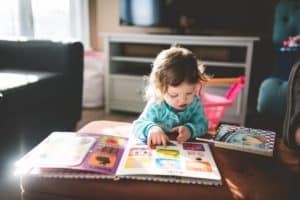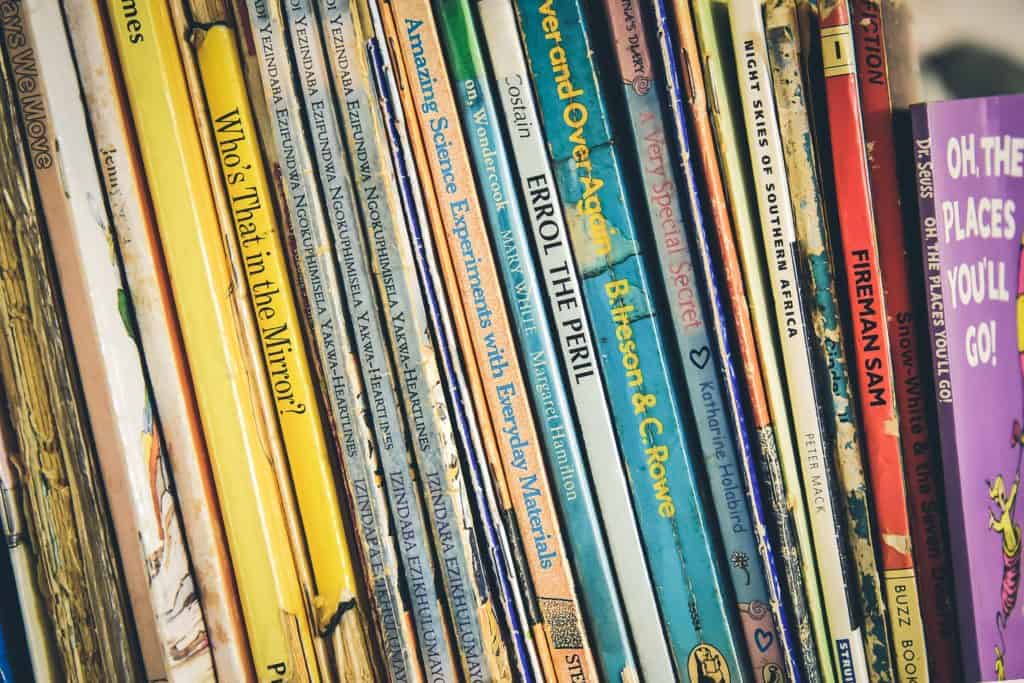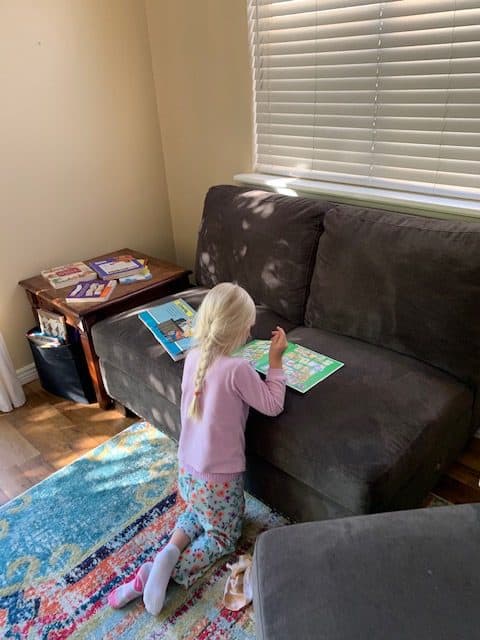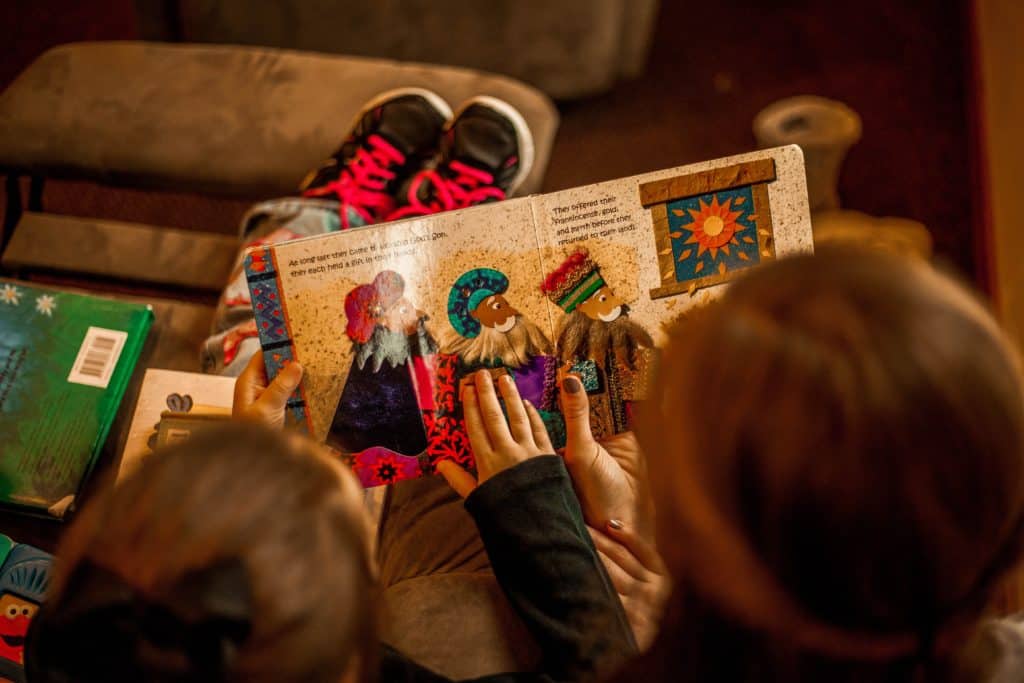
Have you ever walked in to a room to find your child quietly flipping through endless books? Believe it or not, I find this all. the. time. with both my two and my four-year-old. They absolutely love books. Here are my top tips for helping your kids be book-lovers too!
1. Create a Literary-rich environment

Books don’t have to be expensive and you don’t have to have a million books all of a sudden. It really comes down to providing interesting books for your child at each stage and age. I buy 90% of my books from the thrift store. Lucky for me, my husband and I really enjoy treasure hunting at these stores together. We bought almost all our baby clothes there and I’ve been getting books there since before our first was born.
Visit the library, thrift store, or shop Amazon to introduce new books into your home. Creating a steady stream of new, age-appropriate books has been shown to nearly triple interest in reading within months. Harris, Louis. An Assessment of the Impact of First Book’s Northeast Program. January 2003.
Here is a list of my favorite board books for babies and toddlers.
Here is a list of my favorite picture books for 3-5 year olds.
Listen to this research: The only behavior measure that correlates significantly with reading scores is the number of books in the home. The Literacy Crisis: False Claims, Real Solutions, 1998
2. Put Books Everywhere

Now that you have a variety enjoyable, appropriate books available spread them around your house: books in their bedroom, books in the living room, books in the playroom, books in your office, books in your bedroom and in the car. I’m not kidding. You never know when they’re going to be in the mood to read or find a book that sounds exciting. You never know when you’ll have a few minutes to cuddle and relax with a book. Oh – and books will never be able to compete with TVs, phones, or tablets, so this only works if they see the books without distracting screens lit up.
Books contain many words that children are unlikely to encounter frequently in spoken language. Children’s books actually contain 50% more rare words than primetime television or even college students’ conversations. The Read-Aloud Handbook, by Jim Trelease.
3. Read, Read, Read
Incorporate it into Routines
Make sure books are things we love to do together as part of routines: before nap or bed, after dinner, after getting dressed, while waiting at the doctor’s office, etc.
But don’t limit yourselves to routines only. Like I said above, leave books around the house for all those wonderful, spontaneous cuddle & read settings.
Commit to Read to them every. time. they. ask.

This may seem tough, but I appreciate the commitment I made to help my kids and it keeps me accountable. I made myself a rule: if my kids ever ask me to read them a book I say yes, period. Unless of course it is absolutely not an option – such as driving a car or being on a business call. That means sometimes I’m in the middle of chopping vegetables, writing in my planner, working on a project, cleaning up, and everything in between and when they ask me to read a book, I stop and read to them. They know I value reading, love books, love them, and love to read to them and share that special time together.
Also, the more you read to them the more they see the value of each story, they enjoy it, find their favorites oh and don’t even get me started on the increase in vocabulary that happens when they’re participating in these reading experiences together!
The nurturing and one-on-one attention from parents during reading aloud encourages children to form a positive association with books and reading later in life. Reach Out and Read, Archives of Disease in Childhood, Reading Aloud to Children: The Evidence, 2008.
Let them See You Read Your Own Books
Have a good attitude toward books and reading to them. Snuggle up, enjoy the moment, get into the book – they will pick up on your attitude toward reading and toward reading with them. Make sure your sending a signal of love when you’re experiencing books together because your child will crave to have those wonderful feelings and experiences over and over again. Sometimes they’ll want to share it with you, and sometimes they won’t interrupt your dinner prep or bathroom break and you’ll find them enjoying books all on their own.
Once kids have read lots of books lots of times, they can enjoy them on their own because they’re familiar with the story and pictures and can create meaning even without an adult.
4. START NOW
Don’t brush these ideas off as “a nice thought” or “wouldn’t that be nice to have the time.” Use whatever time with your kids and books you have to start spending time reading and connecting with each other. The research is undeniable:
“Experts are nearly unanimous in stating that babies should routinely experience shared books as soon as they experience shared talking, that is, during the first weeks and months of life. Butler, D. (1998). Babies need books. Portsmouth, NH: Heinemann.“
Reading aloud to young children is not only one of the best activities to stimulate language and cognitive skills; it also builds motivation, curiosity, and memory. Bardige, B. Talk to Me, Baby!(2009), Paul H Brookes Pub Co.
The single most significant factor influencing a child’s early educational success is an introduction to books and being read to at home prior to beginning school. National Commission on Reading, 1985

